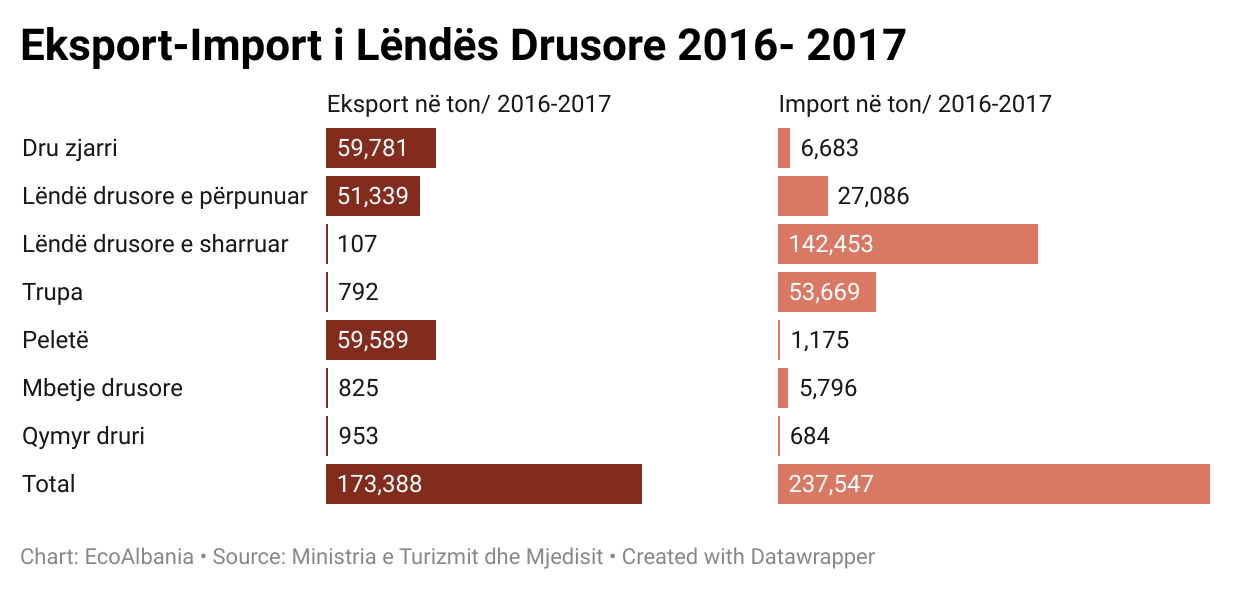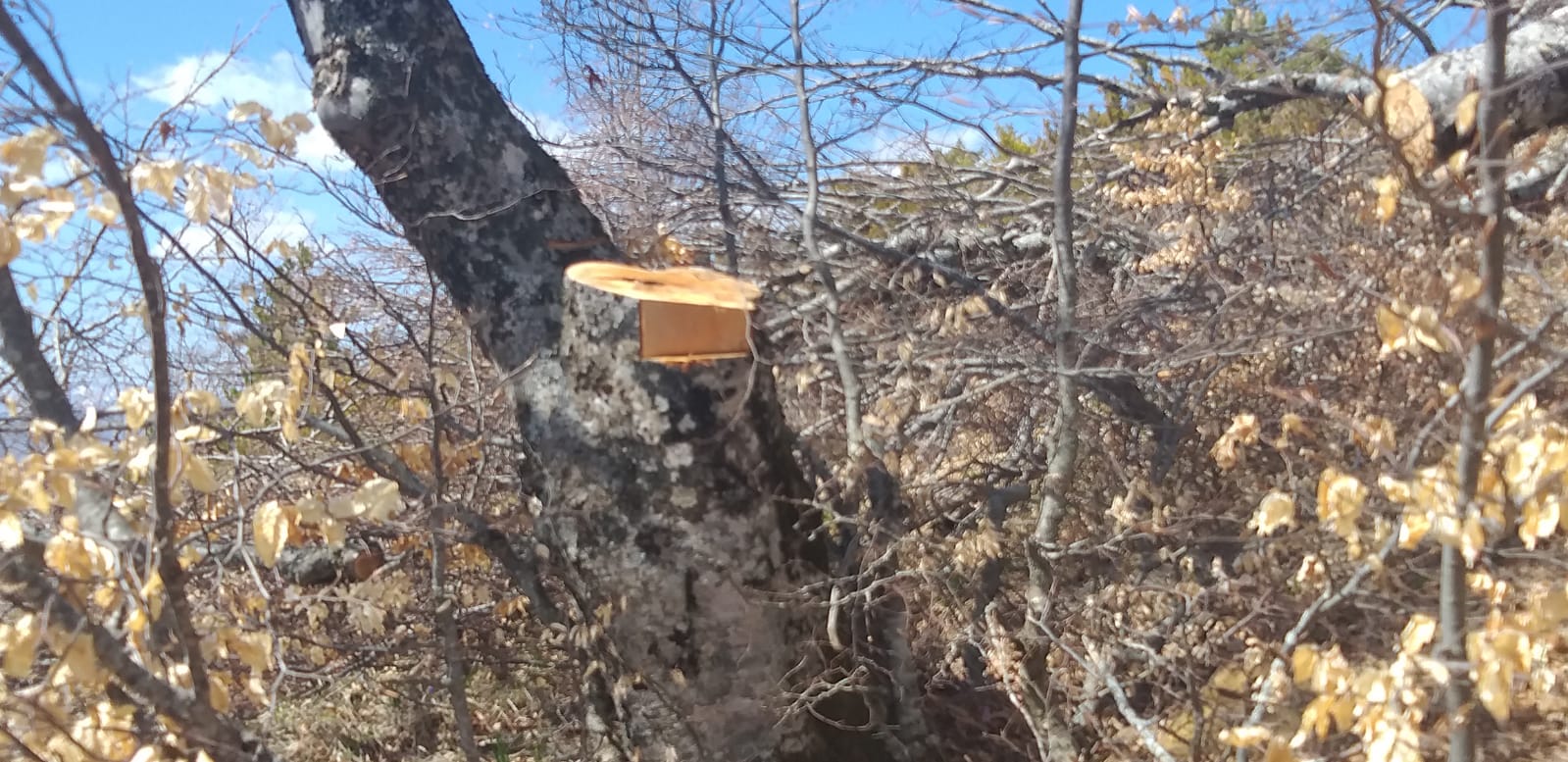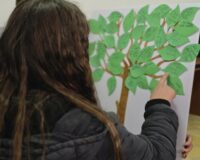The problematic people who “attack” the mountain in the area of Bardhaj, in Rrajcë, part of the National Park of Shebenik – Jabllanica, seem to have taken a break from the cutting of forests, which has enabled the working group in the Administration of Protected Areas ( AdZM) in Elbasan to have some kind of breathing.
In a humorous tone, they state that they have information that the individuals who were cutting trees in the Bardhaj area may have fled to Germany, although the relief seems temporary, as employees of the protected areas state that they may have other similar cases. , so vigilance should not be lowered.
“In the Shebenik-Jabllanicë National Park, in the area of Rrajca, we have had and continue to have problems with illegal cutting of forests”, says Bajram Kullolli, forest engineer of AdZM in Elbasan.
Law no. 5/2016 (in Albanian) “On the announcement of the forest moratorium in the Republic of Albania” has as its object the prohibition of the exploitative activity of timber in the public/private forest fund for a period of 10 years as well as the prohibition of trading of timber products. However, in practice this law faces difficulties in implementation.
During the years 2019-2020, Xhek Nezha, a management specialist at AdZM Elbasan, informs that in the case of plot 17 minutes for illegal prejudices of forests in Rrajcë, the habits of traditional use of the park, which are then shown in the areas of things. . He remembers frequent nights of action, which were repeated, denunciations.

“The hours when the trees are cut are always late, in a word from eight o’clock to four o’clock in the morning“, – confesses Nezha, who until March 2021 had the role of the director of Administration of Protected Areas.
““We have been organized by the directorate, but we have not walked on the main road that leads to the area where the trees are cut. The reason is the point, that they are organized in such a way that my vehicles, be it the private vehicle or the vehicle of my colleague who is a resident of Përrenjas, know all the movements of where we go or our vehicles”, – he recalls.
The central part of the old forest of Rrajca has been part of the natural heritage of UNESCO since 2017. In that area, experts claim, there is no cutting of trees.
The central part of the old forest of Rrajca has been part of the natural heritage of UNESCO since 2017. In that area, experts claim, there is no cutting of trees.
The data released by INSTAT (in Albanian) show that the trade of wood products continues, although the forest moratorium aims to stop the use of timber as well as its trade.
During the years 2016-2019, INSTAT reports that 34,472 cubic meter of tree trunks, where most of them went for firewood and building materials. Specifically, 3,145,712 cubic meters of trees were used for firewood and 7086 cubic meters for construction materials. The rest went for mining poles and charcoal.
Law 5/2016 aims to prohibit the export of raw wood, construction material, firewood and charcoal.
The report compiled by the Ministry of Environment itself, in cooperation with the Swiss Embassy, ” On the policies of the forestry sector in Albania” shows that the export of timber during the years 2016-2017 was in a much higher ratio than its import. The export of firewood is 53 thousand tons more than the import. During 2016-2017, Albania exported 59,781 tons of firewood, while it imported 6,683 tons.
In total, including processed timber, sawn timber, tree trunks, wood waste and charcoal, Albania exported 173,388 tons of timber for the year 2016-2017.

FAILURE TO RESPECT THE LAW CAUSES THE ACT OF ILLEGAL CUTTING OF FORESTS TO REPEATE
When he shows his phone full of images of individuals who illegally cut forests for commercial purposes, Nezha says that he has deleted many of the photos of cut trees, precisely because of the bad feeling they cause him.
Notifications that trees are being cut in the forest are made through environmental guards who guard the forest on a daily basis.
“There are three people in Rrajcë and there are 11 people in the entire territory of the park. At night, they go out in groups of 3-4 people by car”, says forest engineer Bajram Kullolli.
Specialist Xhek Nezha says that they often have to maneuver and find new methods in order to catch the forest cutters in the act, as they also receive their signals that employees of the Administration of Protected Areas have gone to the field.
Nezha remembers that they often have to walk, as they know the work and personal tools.
“We had to walk for four hours from the other side of the mountain and came out to wait for them. This happens every year, this is how we do every action”, he confesses.
In cases where they catch perpetrators cutting down forests, the situation goes like this; film materials with videos and photos are made, the minutes are completed and then the case is delegated to the State Police.
“In the traditional area of Rrajca, most of those that have been cut down are old, 150-200 years old”, says Bajram Kullolli. According to AdZM Elbasan, from 2015 to 2018, a total of 517 40-200-year-old tree trunks were cut.

The prosecution is the last link that makes a decision about the case in question before sending the law breakers to justice. Despite the findings and the referral to the State Police, Xhek Nezha claims that the cases have been repeatedly repeated by the same persons.
“If it were in our hands, a record of finding and fine in the country would be more tangible for the author”, he says.
The Criminal Code, in Article 205, states that illegal cutting of forests or their damage, when it does not constitute an administrative misdemeanor, constitutes a criminal misdemeanor and is punishable by a fine or imprisonment of up to one year.
The data for the 9th month of 2020 show that 129 criminal proceedings have been registered for illegal cutting of forests, where 20 of them have started a regular court process, while 80 of them have not.
Cutting trees without permission, when it is an administrative offense, is punishable by a fine of 5,000 to 10,000 ALL according to Law 57/2020 “On Forests”.

THE CUT TREES GO FOR THE CONSUMPTION OF FAMILIES THAT STILL WARM WITH FIREWOOD
“From the information we have, they sell the cut trees in the nearby areas, it’s not like they have an organized trade, they take them to the residents of Rrajce, Sutaj, maybe a little to Përrenjas”, says Kullolli.
Families in the village of Bardhaj also heat themselves with firewood, who load the mules on the least cold days of the year, in order to withstand the winter frost. But with them, the Administration of Protected Areas has found a combination that does not damage the forest, and at the same time does not deny the inhabitants the primary material they need to survive the winter.
Inhabited mainly by three large tribes, family members of the Vlashi and Bogdani tribes claim that they first notify the forest inspector and then travel two hours to go and load the mule with the trees that are felled or damaged in the traditional use area of the National Park .
“In the area of traditional use, these are taken that are broken, rotten wood, or felled by atmospheric factors”, says Kullolli.
“We can’t go there during the winter. We go and get five, five cubic meters, six, seven during the summer season, but when it’s cold, we can’t go. We go once a week, twice a week”, says Bashkim Bogdani.
The amount of wood needed to survive the winter is affected by the severity of the winter.
“It depends on how the winter is, if it is bitter, five, seven, ten cubic meters, many. I cook with gas and a stove”, says Flamur Bogdani.
“The village of Bardhaj consists of 67 families, about 250 inhabitants, and the vast part that is here in the village is covered with wood. Wood that is damaged by cyclones, by the wind, fallen, uprooted, dry”, says Tahir Bogdani, environmental guard in the Shebenik – Jabllanicë National Park.
Specialist Xhek Nezha also affirms the increased problem with the cutting of forests in the traditional area of the Shebenik-Jabllanice National Park during 2020.
“In 2020, many young people could not emigrate because we were blocked and turned to the forest as a means of earning” – he added
According to data published by Global Forest Watch, from 2016 to 2020, the Municipality of Librazhdi has lost 421 hectares. The biggest loss is recorded during 2020, with 110 hectares of forests lost. The loss of forests is not only caused by cutting, but also by fires or atmospheric conditions.

The forest engineer of AdZM Elbasan, Bajram Kullolli, says that the continuous fires have caused great damage which has not yet been recovered.
“There were several fires in 2011-2013 and 2016, it had an extremely bad impact, but it did not manage to devastate the entire space and old trees remained. Last year there was a purification of beech forests”.
Kullolli concludes that it could have been invested in aspects such as the removal of grasses, light tillage, or in the planting of spruce, black pine seeds in the areas damaged by the fires, but this has not been possible by the Zoning Administration Protected, as it requires a lot of expenses.
Also this summer, active fire foci were reported for three days in a row in Rrajcë. From the 17( in Albanian) up to August 19,(in Albanian) The Ministry of Defense announced active fire outbreaks on the mountain of Rrajca, but the risk of forest burning in the Shebenik – Jabllanicë National Park was avoided.








